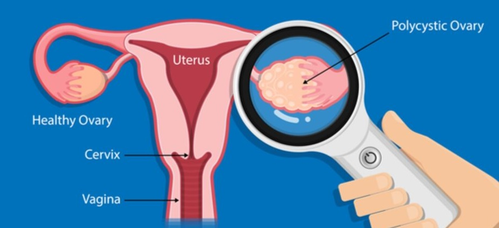New Delhi, Sep 25 (IANS) Genetics may serve as an early indicator to identify the risk of the hard to diagnose ovarian cancer among women, said experts on Monday.
September is observed as ovarian cancer awareness month. It is the third most common cancer in women worldwide and nearly 20,000 women are newly diagnosed every year worldwide. With about 12,000 women dying each year due to ovarian cancer worldwide, it is one of the deadliest gynaecological cancers.
However, due to common and subtle symptoms, early detection is hard. By the time the diagnosis is made, the cancer reaches an advanced stage.
“Ovarian cancer is a slow-growing cancer, so it can grow and spread without causing any symptoms until it is in an advanced stage. The symptoms of ovarian cancer can be vague and easily mistaken for other conditions. This is why it is important to observe them right,” Dr Nishith Modi, Consultant – Surgical Oncology, HCG Cancer Centre, Vadodara, Gujarat, told IANS.
“It is a very challenging cancer to diagnose compared to other types of cancer as the symptoms are very non-specific and can easily be attributed to any other common lifestyle disorder such as indigestion and bloating,” added Dr Rubina Shanawaz Z, Consultant Uro-Gynaecology, Gynae-Oncology & Robotic Surgery, Fortis Hospital, Cunningham Road, Karnataka.
The doctors explained that some common symptoms include abdominal bloating or swelling, feeling full quickly after eating, difficulty eating or lack of appetite, pelvic pain, abdominal pain or cramping, the need to urinate more frequently or urgently than normal, fatigue, back pain, constipation, or changes in a woman’s period.
According to Rubina, ovarian cancer is one of the commonest cancers affecting women in India and its incidence has been rising over the past few years.
“If there are persistent symptoms, then women tend to go for an evaluation and it can usually be diagnosed by ultrasound. Two-thirds of ovarian cancers occur in the postmenopausal age group.
“By the time the patient comes for a check up and imaging is done, it usually gets to the advanced stages. Adhering to yearly ultrasound of the abdomen and pelvis would help in identifying cancer in the early stage,” she said.
However, Dr Rashmi Dharaskar from Surya Mother and Child Super Speciality Hospital Pune told IANS that genetics may offer some hope.
“Genetics serves as the intricate blueprint of our health journey, and when it comes to ovarian cancer, it plays a pivotal role in shaping risk assessment, guiding treatment decisions, and the path to prevention,” said Rashmi, senior consultant- obstetrics and gynaecology.
A recent study estimates that around 23 per cent of ovarian cancers are primarily due to hereditary factors. Genes provide instructions for making essential proteins in our bodies. When genes grow and divide uncontrollably, they can turn normal cells into cancerous ones.
The doctor noted “when talking about ovarian cancer, genetic markers like BRCA1 and BRCA2 can signal a higher risk and enable a closer watch. When it comes to prevention, genes not only predict the narrative but also rewrite its course, resolving the mystery of drug resistance and facilitating targeted therapies”.
For instance, in cases with BRCA mutations, actions like closer check-ups are important for early detection which could be followed by surgeries. Knowing these genetic signs helps doctors create personalised treatment plans.
“In the world of genetics and ovarian cancer, there’s hope-for finding cancer early, designing treatment plans tailored to each person, and potentially minimising the impact of the disease through genetic knowledge,” she said.
In addition, risk factors for ovarian cancer include but are not exclusive to family history of cancers in the reproductive tract/breast/colorectal cancers, obesity, not having been pregnant, history of hormone use for fertility treatment/postmenopausal replacement therapy, said Rubina.
–IANS
rvt/prw




























